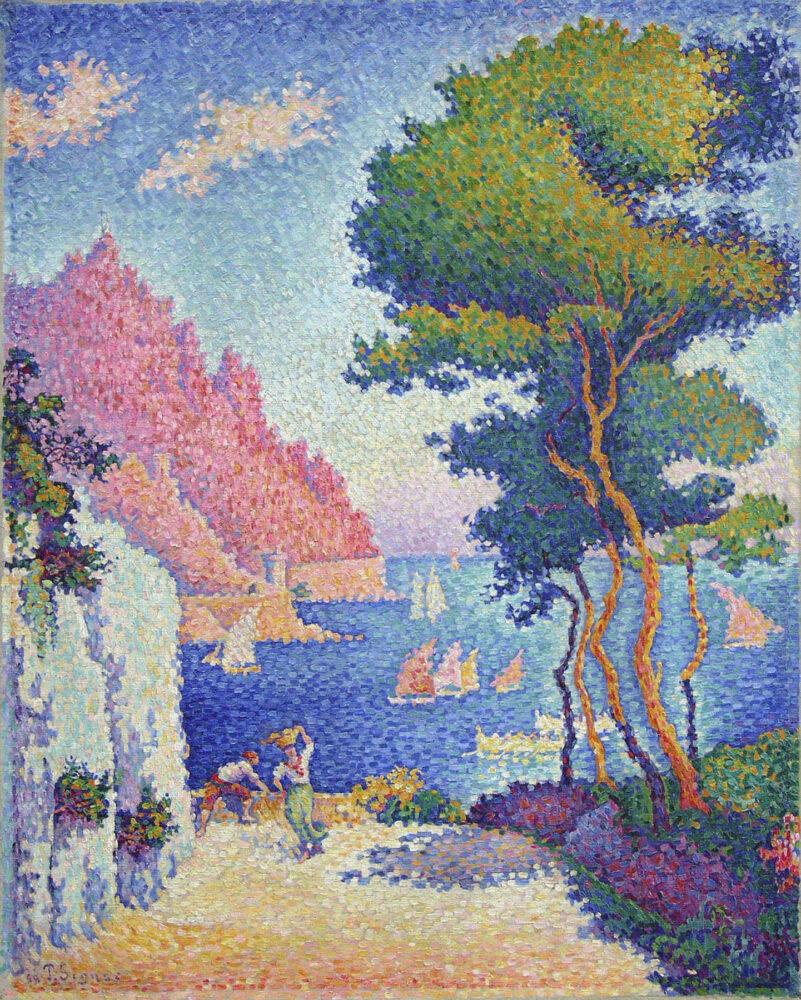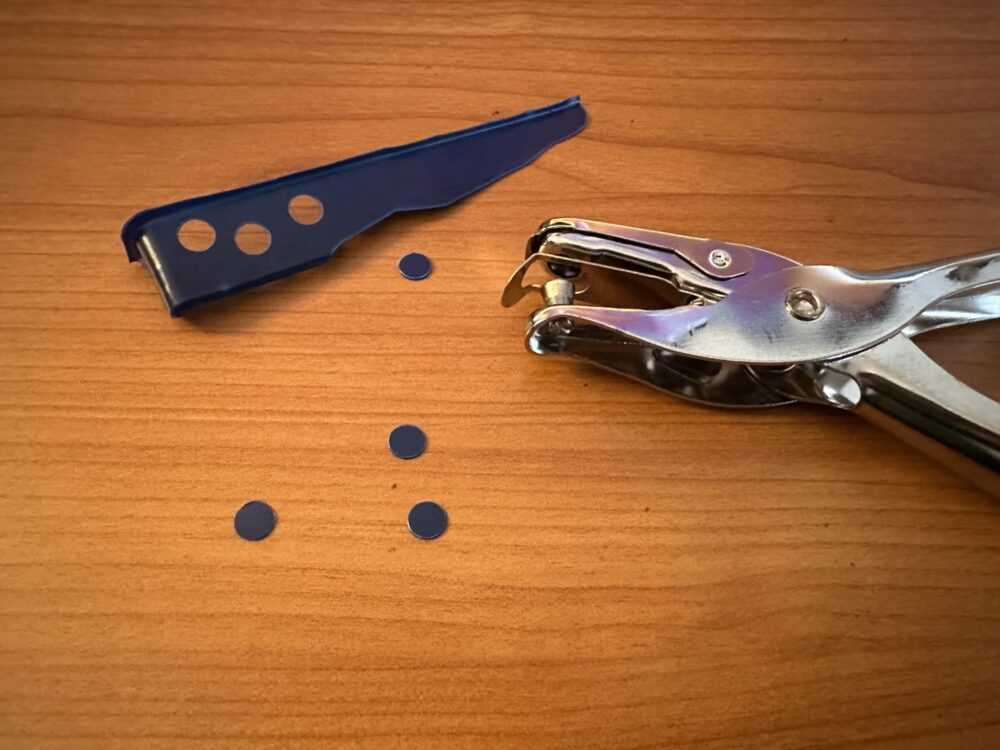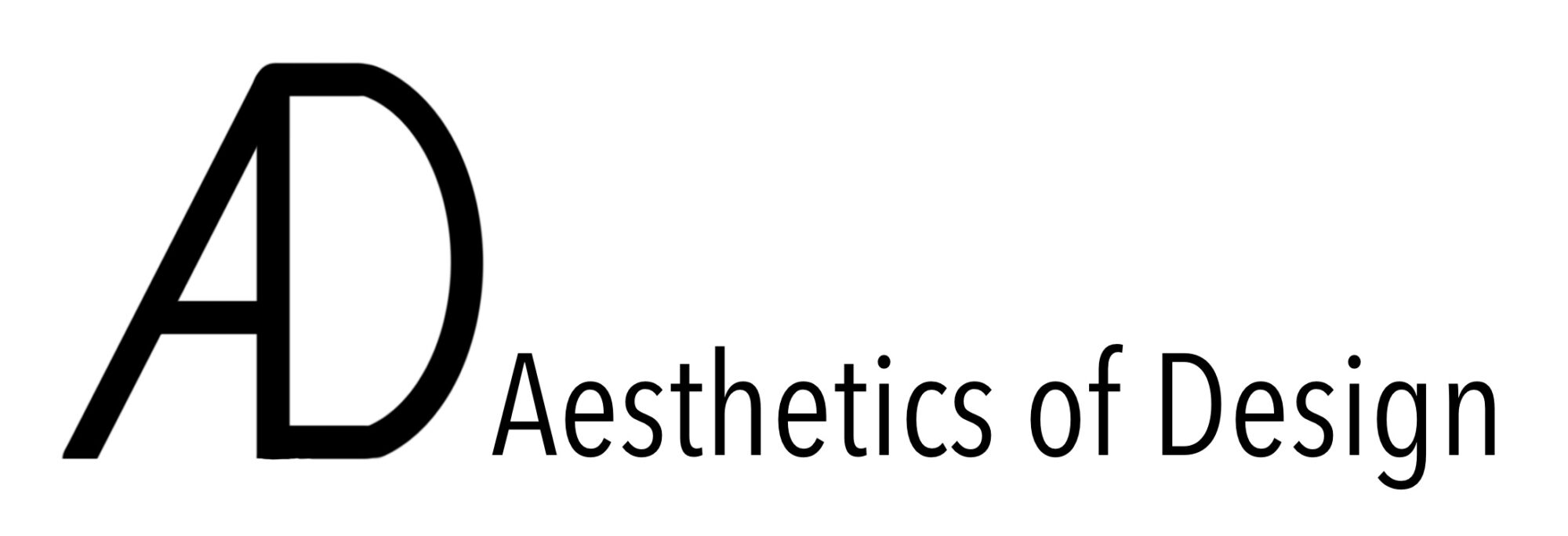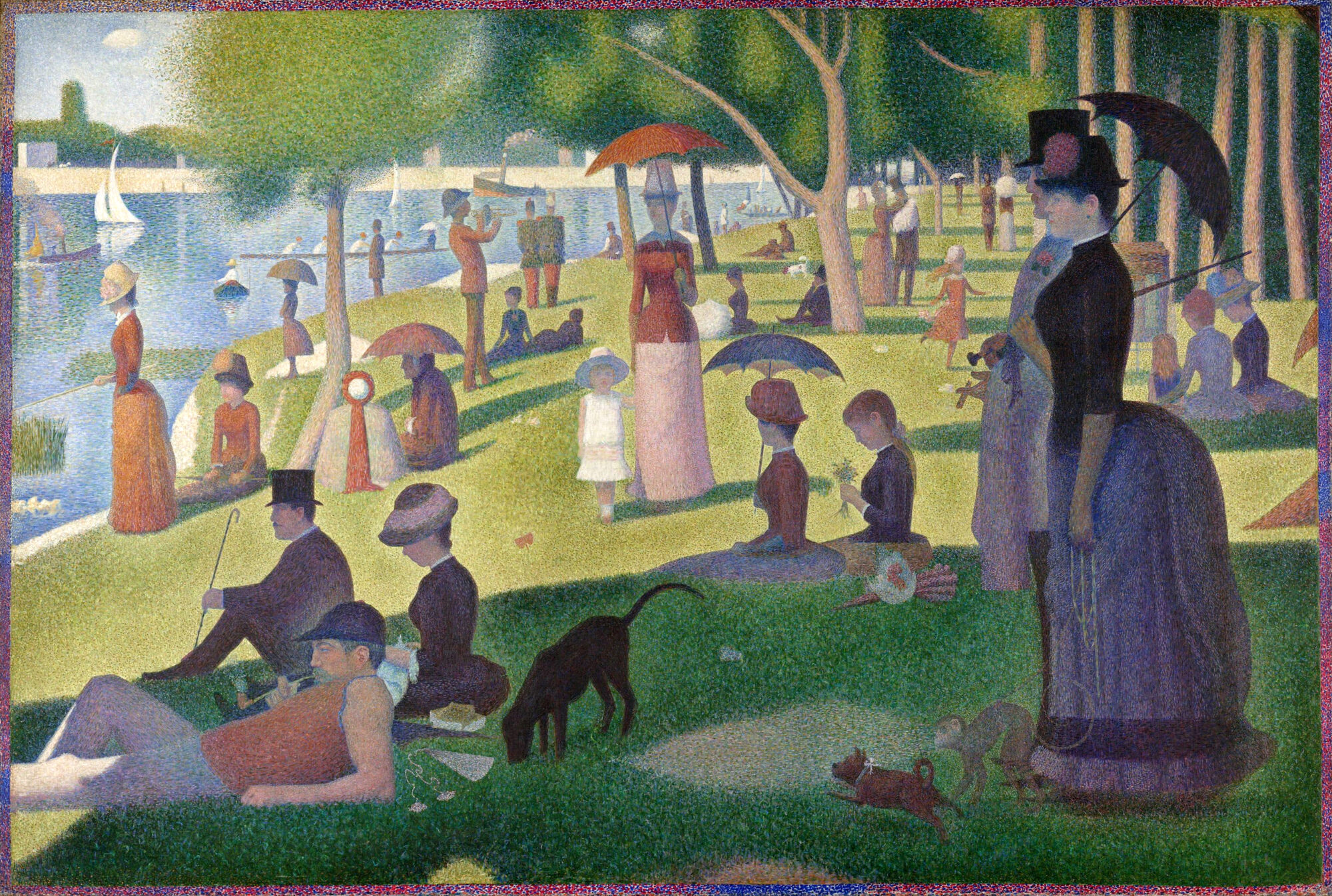For my upcycling project I will be creating a piece using Pointillism, a technique that is a part of the broader Neo-impressionist movement and aesthetic. Neo-Impressionism was a movement in French painting during the late 19th century that reacted against the empirical realism of impressionism, relying on scientific theories of color to achieve visual effects [1]. “Whereas the Impressionist painters spontaneously recorded nature in terms of the fugitive effects of color and light, the Neo-Impressionists applied scientific optical principles of light and color to create strictly formalized compositions” [1]. The Neo-Impressionist movement was led by Geroge Seurat, creator of the infamous “A Sunday on La Grande Jatte” (Shown in the featured image of this post), and Paul Signac (His work “Capo di Noli” is shown below). “The terms divisionism and pointillism originated in descriptions of Seurat’s painting technique, in which paint was applied to the canvas in dots of contrasting pigment” [1]. Pointillism uses “a calculated arrangement of colored dots, based on optical science, intended to be perceived by the retina as a single hue” [1]. This process is similar to how CMYK printing works, using primary colors layers, or placed closely together to “trick” the eye into perceiving a wider range of secondary tones [2].

By Paul Signac – Wallraf-Richartz-Museum, Public Domain, https://commons.wikimedia.org/w/index.php?curid=111
To create an upcycled work in the Pointillism aesthetic I am planning on using a hole punch tool (shown below) to create dots of color that I will be able to use to create a Pointillist piece. Using this hole punch I will be able to create dots of color from various materials, including scraps of plastic and cardboard, commonly used as packaging and then thrown away. I believe that using the punched holes to create a Pointillist piece will align strongly with the aesthetic principals of the movement. In addition to being able to use the dots as one would use oil paints, I believe that by using various materials to create dots of color, I will also be able to create dots of varying translucency that will allow for me to layer dots to create impressions of color that would be more difficult to create with only opaque dots of paint. Pointillism’s use of only a few primary colors will allow for me to only need to source 4 colors of material (cyan, magenta, yellow and black) that I will then use to create other tones by layering or placing the dots in close proximity. I will be able to use materials that I find in other secondary tones as well to skip the mixing step, but by being able to combine tones using pointillism techniques I will be able to create colors that may be difficult to find in waste.

[2] Image of hole punch and test material, own work.
References
[1] Britannica, The Editors of Encyclopaedia. “Neo-Impressionism”. Encyclopedia Britannica, 14 May. 2024, https://www.britannica.com/art/Neo-Impressionism. Accessed 29 January 2025.
[2] Wikipedia contributors. “Pointillism.” Wikipedia, The Free Encyclopedia. Wikipedia, The Free Encyclopedia, 5 Dec. 2024. Web. 29 Jan. 2025.
Images
[Featured Image] [1]A Sunday on La Grande Jatte, Georges Seurat, 1884 By Georges Seurat – https://www.bostonglobe.com/arts/theater-dance/2016/09/01/huntington-two-georges-one-sondheim/OR1D4DPM8GsME67aXEjWiP/story.html, Public Domain, https://commons.wikimedia.org/w/index.php?curid=11500785 [2] Own Work


2 Comments. Leave new
Hey Seth! I think this is gonna be a great project! Did you consider using other shapes to make it? Hole punching different plastics might take a while unless that is your intended purpose in making this!
This is a really cool idea! This is probably going to take you a long time to finish! I feel like you can also use metals like thin sheets of aluminum and copper to create texture and color. Or maybe play around with other materials? Do you have an idea in mind on what you will create?